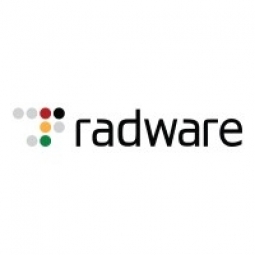Customer Company Size
Mid-size Company
Region
- America
Country
- United States
Product
- Radware FastView
Tech Stack
- HTML5
- CSS
Implementation Scale
- Enterprise-wide Deployment
Impact Metrics
- Productivity Improvements
- Customer Satisfaction
Technology Category
- Infrastructure as a Service (IaaS) - Cloud Computing
Applicable Industries
- Healthcare & Hospitals
Applicable Functions
- Sales & Marketing
Services
- Cloud Planning, Design & Implementation Services
About The Customer
LuckyVitamin.com was established in 2004 as a pioneer for the online distribution of health and wellness products in the vitamin and supplement industry. The company’s success is predicated on its commitment to giving 5-star service to every customer. Speed is a critical component in delivering on this commitment. LuckyVitamin.com has a stated goal of “making the time between your final click and the arrival of your package seem like seconds.” To achieve this goal, the company’s fulfillment team works around the clock 7 days a week to get orders out the door as quickly as possible, and customer service representatives are always available to answer questions and offer support.
The Challenge
LuckyVitamin.com, an online distributor of health and wellness products, was facing challenges in optimizing performance across its dynamic and complex website. The company was aware of the importance of web performance and had spent years manually optimizing their pages. However, this process was time-consuming, never-ending, and required highly specialized work from some of the best developers in the company. The company was looking for an automated solution that could deliver faster pages consistently and reliably across their entire site.
The Solution
LuckyVitamin.com turned to FastView, an automated front-end optimization (FEO) solution that could be deployed easily and deliver fast results. After a trial and testing with FastView, the company decided to implement it as it demonstrated results right away. FastView offered elite performance optimization, 24-7 support throughout implementation and beyond, and eliminated network overhead by optimizing via the cloud. This solution also improved employee productivity as performance tuning was no longer part of the developers’ workload, allowing them to concentrate on feature development.
Operational Impact
Quantitative Benefit

Case Study missing?
Start adding your own!
Register with your work email and create a new case study profile for your business.
Related Case Studies.

Case Study
Hospital Inventory Management
The hospital supply chain team is responsible for ensuring that the right medical supplies are readily available to clinicians when and where needed, and to do so in the most efficient manner possible. However, many of the systems and processes in use at the cancer center for supply chain management were not best suited to support these goals. Barcoding technology, a commonly used method for inventory management of medical supplies, is labor intensive, time consuming, does not provide real-time visibility into inventory levels and can be prone to error. Consequently, the lack of accurate and real-time visibility into inventory levels across multiple supply rooms in multiple hospital facilities creates additional inefficiency in the system causing over-ordering, hoarding, and wasted supplies. Other sources of waste and cost were also identified as candidates for improvement. Existing systems and processes did not provide adequate security for high-cost inventory within the hospital, which was another driver of cost. A lack of visibility into expiration dates for supplies resulted in supplies being wasted due to past expiry dates. Storage of supplies was also a key consideration given the location of the cancer center’s facilities in a dense urban setting, where space is always at a premium. In order to address the challenges outlined above, the hospital sought a solution that would provide real-time inventory information with high levels of accuracy, reduce the level of manual effort required and enable data driven decision making to ensure that the right supplies were readily available to clinicians in the right location at the right time.

Case Study
Gas Pipeline Monitoring System for Hospitals
This system integrator focuses on providing centralized gas pipeline monitoring systems for hospitals. The service they provide makes it possible for hospitals to reduce both maintenance and labor costs. Since hospitals may not have an existing network suitable for this type of system, GPRS communication provides an easy and ready-to-use solution for remote, distributed monitoring systems System Requirements - GPRS communication - Seamless connection with SCADA software - Simple, front-end control capability - Expandable I/O channels - Combine AI, DI, and DO channels

Case Study
Driving Digital Transformations for Vitro Diagnostic Medical Devices
Diagnostic devices play a vital role in helping to improve healthcare delivery. In fact, an estimated 60 percent of the world’s medical decisions are made with support from in vitrodiagnostics (IVD) solutions, such as those provided by Roche Diagnostics, an industry leader. As the demand for medical diagnostic services grows rapidly in hospitals and clinics across China, so does the market for IVD solutions. In addition, the typically high cost of these diagnostic devices means that comprehensive post-sales services are needed. Wanteed to improve three portions of thr IVD:1. Remotely monitor and manage IVD devices as fixed assets.2. Optimizing device availability with predictive maintenance.3. Recommending the best IVD solution for a customer’s needs.

Case Study
HaemoCloud Global Blood Management System
1) Deliver a connected digital product system to protect and increase the differentiated value of Haemonetics blood and plasma solutions. 2) Improve patient outcomes by increasing the efficiency of blood supply flows. 3) Navigate and satisfy a complex web of global regulatory compliance requirements. 4) Reduce costly and labor-intensive maintenance procedures.

Case Study
Cloud-based healthcare solution for Royal Philips
Royal Philips wanted to launch its cloud-based healthcare solution HealthSuite Digital Platform in China to deliver services to help cope with challenges related to urbanization and population growth. Philips wanted to achieve this goal by combining mobile, cloud computing and big data technologies. To bring this platform and product to market, Philips required cloud computing and local technical service capabilities in China, in addition to a flexible IT infrastructure that could handle user requests.








